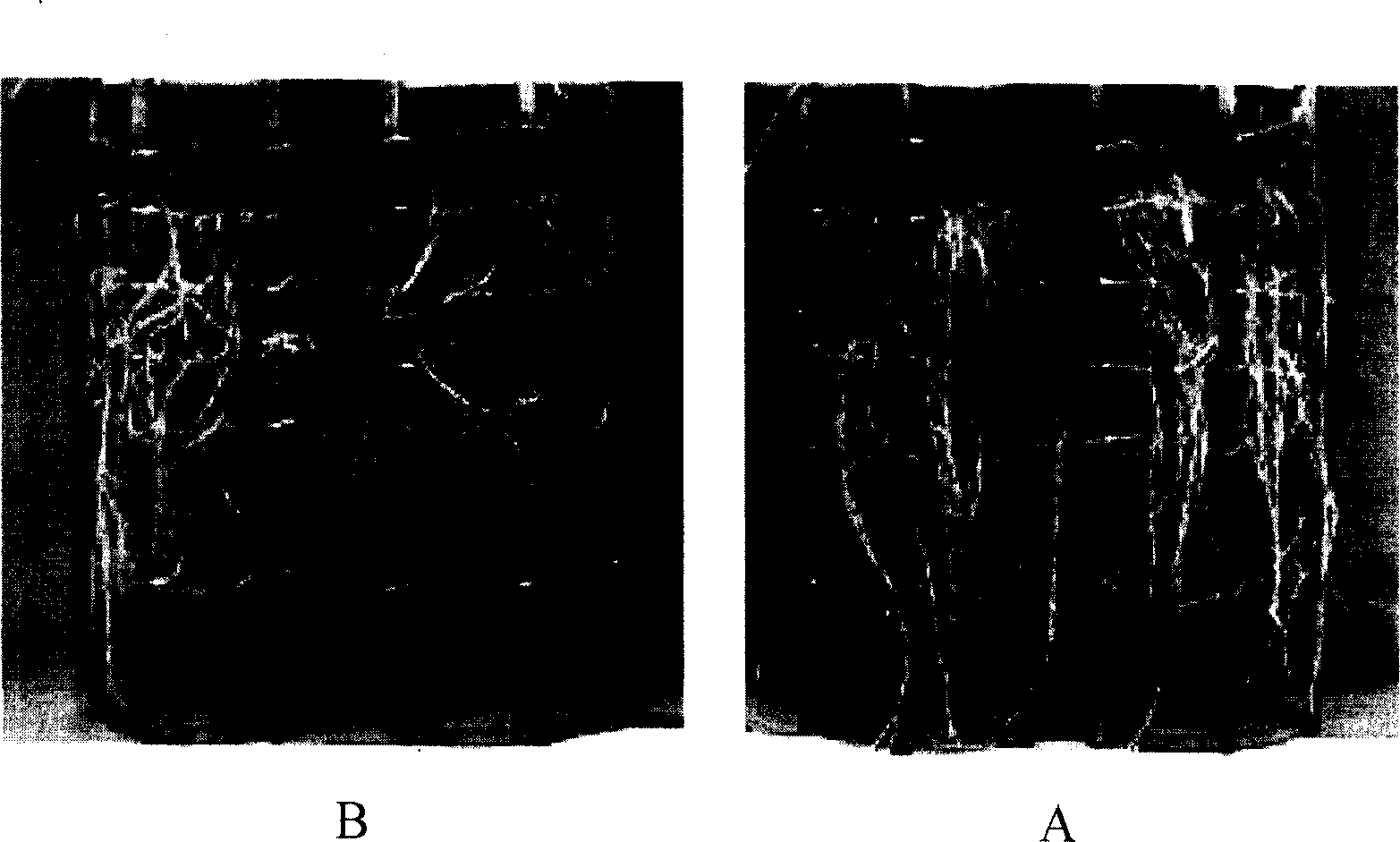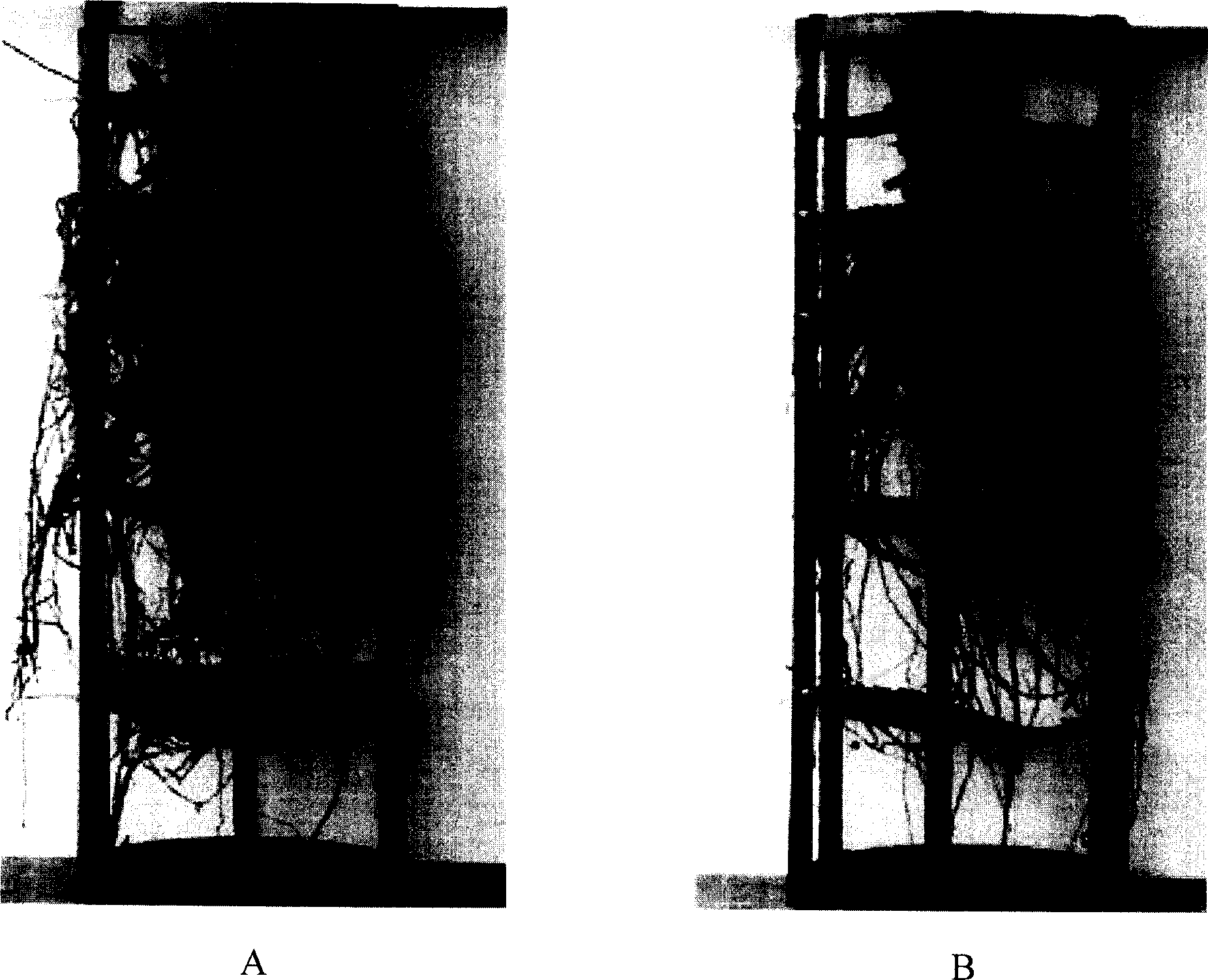Nutrient content-saving paddy root-flourishing wither-inhibiting fertilization method
A fertilization method and rice technology, which are applied in the directions of fertilization methods, rice cultivation, fertilization devices, etc., can solve the problems of insufficient utilization of fertilizer nutrients, ecological environment pollution, waste of fertilizer resources, etc., reduce ineffective tillers, increase planting density, prevent The effect of obesity and premature aging
- Summary
- Abstract
- Description
- Claims
- Application Information
AI Technical Summary
Problems solved by technology
Method used
Image
Examples
Embodiment 1
[0019] Embodiment one pot experiment
[0020] The experiment was carried out in the Soil and Fertilizer Research Institute of Guangdong Academy of Agricultural Sciences from late rice in 2003 to late rice in 2005. Before the test, all the soil was crushed, passed through a 5cm sieve, mixed evenly, and placed in pots. Micro holes were drilled in the bottom of each pot to allow a small amount of water to drain out. The soil weight of each pot is 12 kg. The rice varieties used include conventional high-quality rice (Yuexiangzhan, Yuexinzhan No. 2) and super rice (Yuxiangyouzhan, Guinongzhan, Yueza 122). All experiments were transplanted when rice seedlings had one leaf and one heart, with 4 holes per pot and 2 seedlings per hole.
[0021] Four treatments were set up in the conventional high-quality rice experiment, including conventional divided fertilization (control 1, ck1), one-time fertilization (control 2, ck2), vigorous root nutrient management, and no fertilization. Eac...
Embodiment 2
[0026] Embodiment two field test
[0027] The test was carried out on late rice in 2003 and early rice in 2004. The soil used for the test was red red soil paddy soil. The basic chemical properties were pH5.2, organic matter 8.7g / kg, alkaline nitrogen 25.5mg / kg, available phosphorus 6.4mg / kg, available Potassium 45.6mg / kg. The late rice variety in 2003 was Jiuqixiang, and the early rice variety in 2004 was Yuexiangzhan.
[0028] In 2003, four treatments were set up in the late rice experiment, including conventional batch application of special fertilizer (ck, referred to as conventional batch application, the same below), one-time application of slow-release fertilizer 1 (abbreviated as slow-release fertilizer 1, the same below), slow-release fertilizer 2 One-time application (abbreviated as slow-release fertilizer 2, the same below), and slow-release fertilizer 2 Wanggen anti-aging nutrient management 1 (abbreviated as Wangroot anti-aging nutrient management 1, the same bel...
Embodiment 3
[0033] Adopt the 2 fertilization conditions of 2004 early rice flourishing root suppression nutrient management in embodiment two:
[0034] The first step is to determine that the total amount of fertilization is 75% of conventional fertilization, that is, the amount of nitrogen, phosphorus, and potassium per mu is 7.50, 2.28, and 6.52 kilograms respectively;
[0035] The second step is to use 70% of the fertilizer as the base fertilizer and apply it in the whole tillage layer when the rice seedlings are transplanted;
[0036] The third step is to use the remaining 30% of the fertilizer as topdressing, and apply it to the soil surface at one time after the rice seedlings are transplanted for 40 days.
[0037] Rice seedlings are planted at a density that increases by 8% compared to conventional fertilization, that is, from the current planting density of 14,000 holes per mu to 15,000 holes.
[0038] Such as figure 1 , 2 , shown in 3, the rice root growth condition A that ado...
PUM
 Login to View More
Login to View More Abstract
Description
Claims
Application Information
 Login to View More
Login to View More - R&D
- Intellectual Property
- Life Sciences
- Materials
- Tech Scout
- Unparalleled Data Quality
- Higher Quality Content
- 60% Fewer Hallucinations
Browse by: Latest US Patents, China's latest patents, Technical Efficacy Thesaurus, Application Domain, Technology Topic, Popular Technical Reports.
© 2025 PatSnap. All rights reserved.Legal|Privacy policy|Modern Slavery Act Transparency Statement|Sitemap|About US| Contact US: help@patsnap.com



